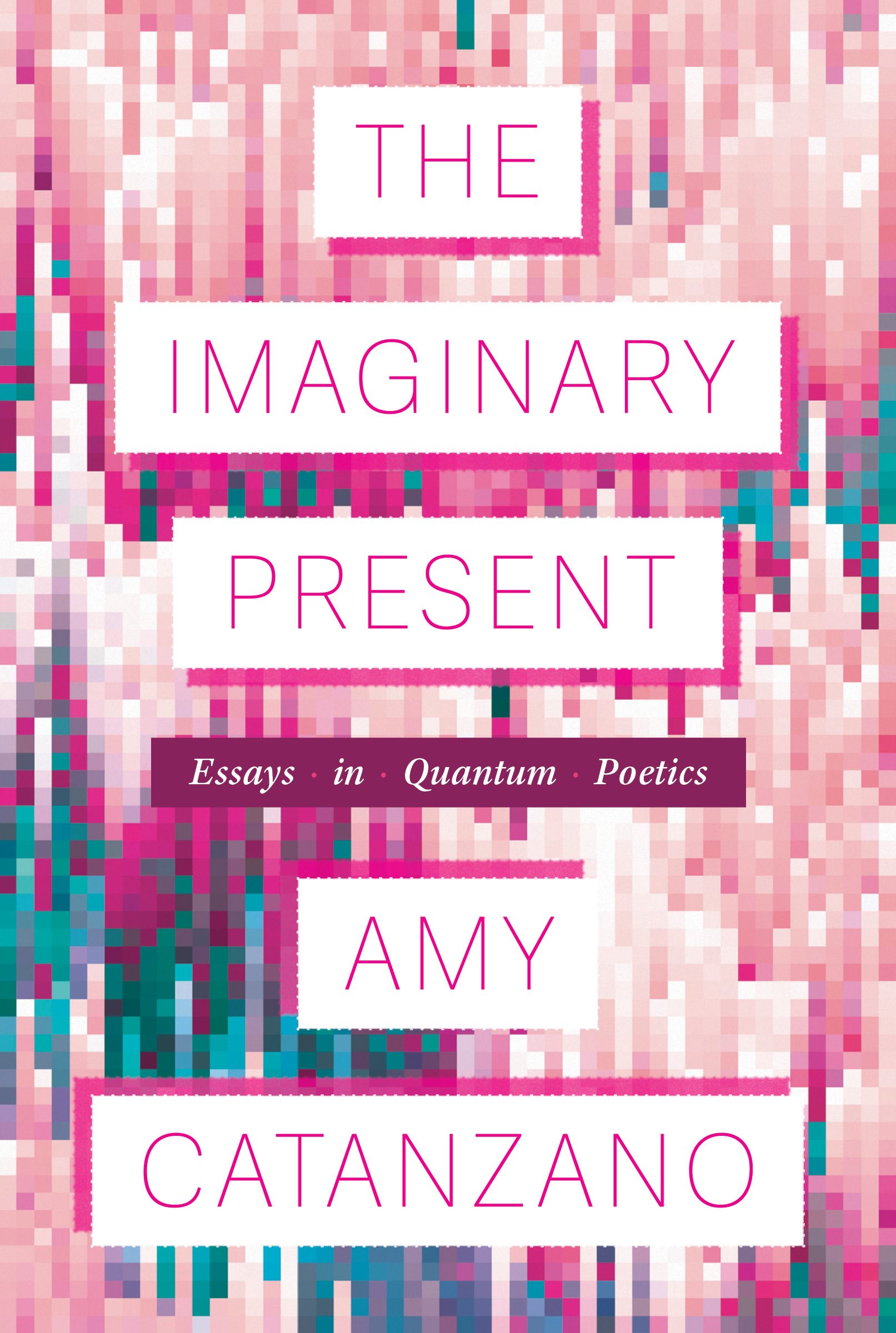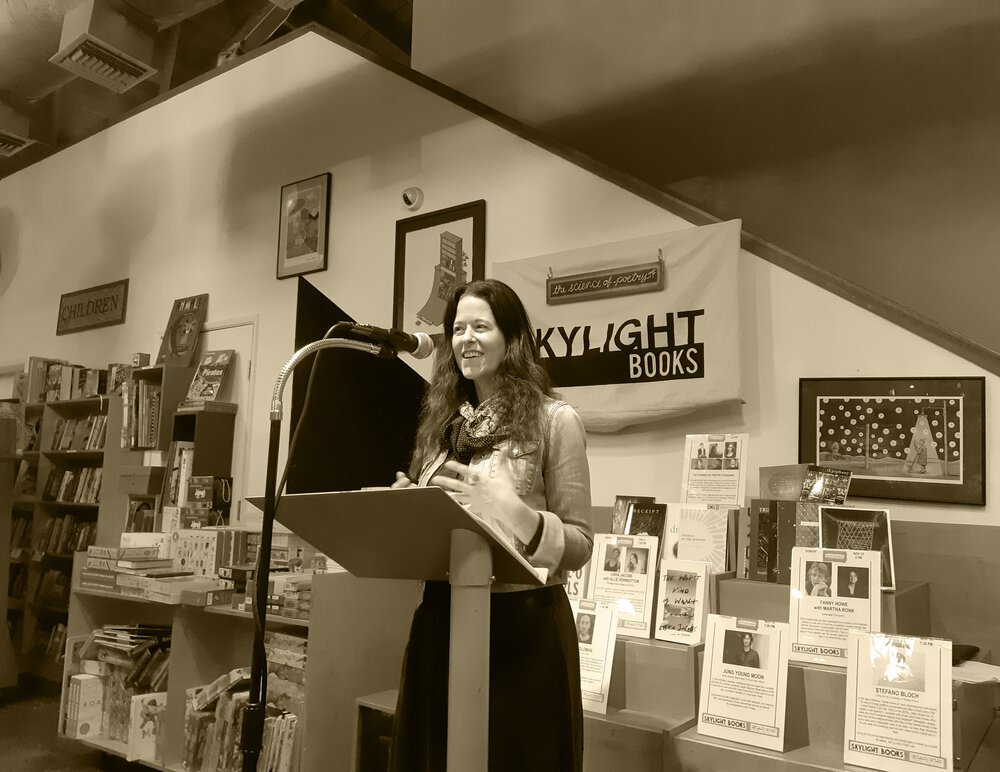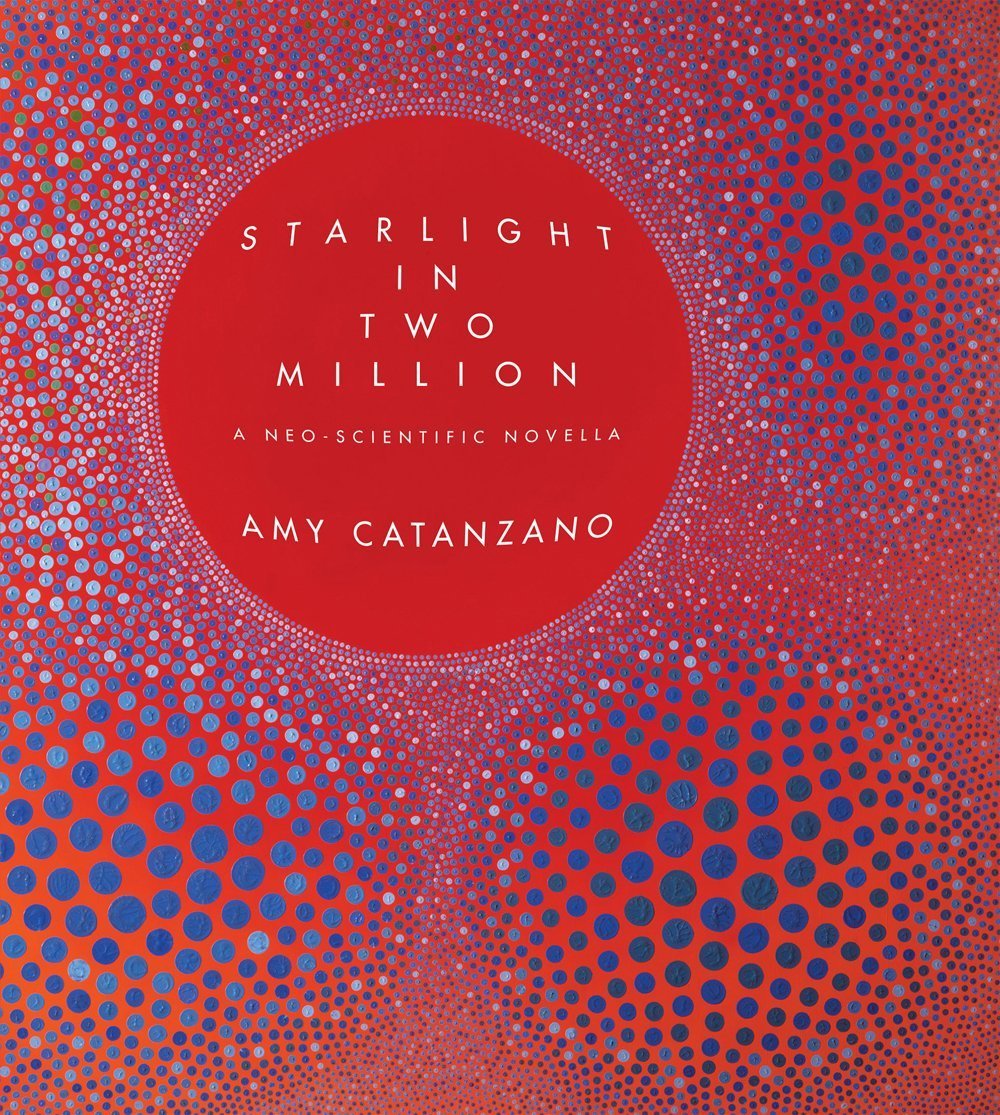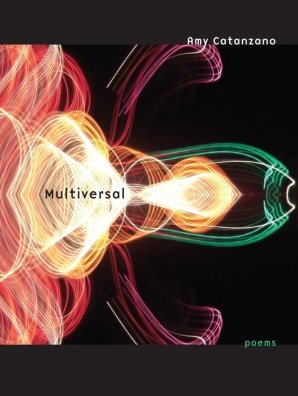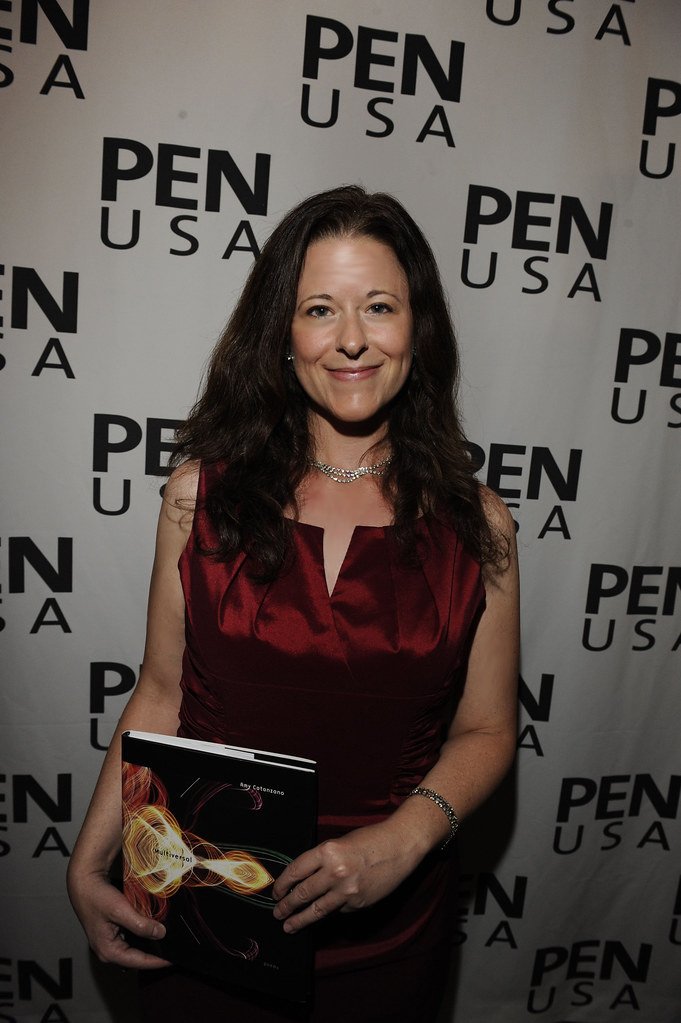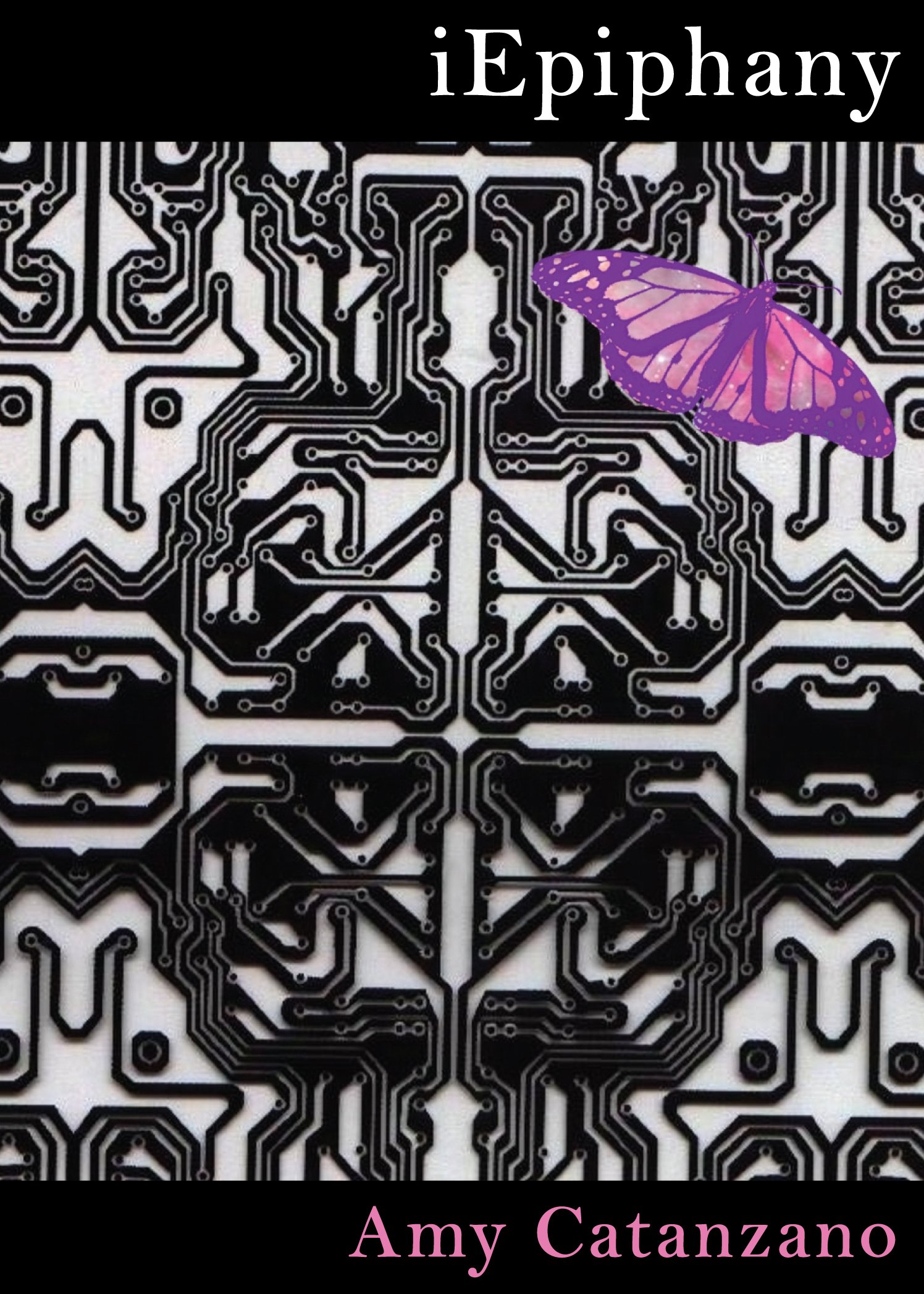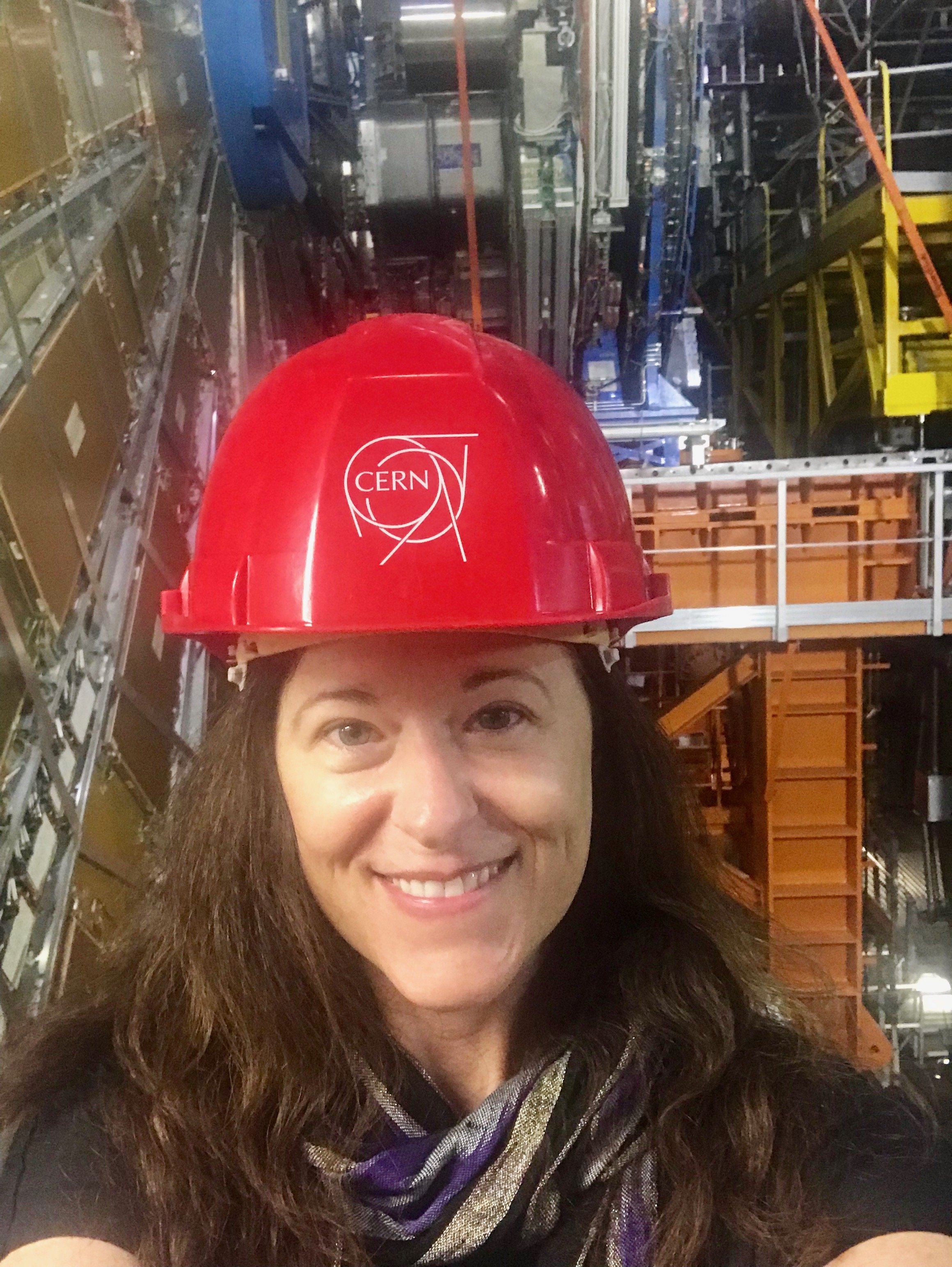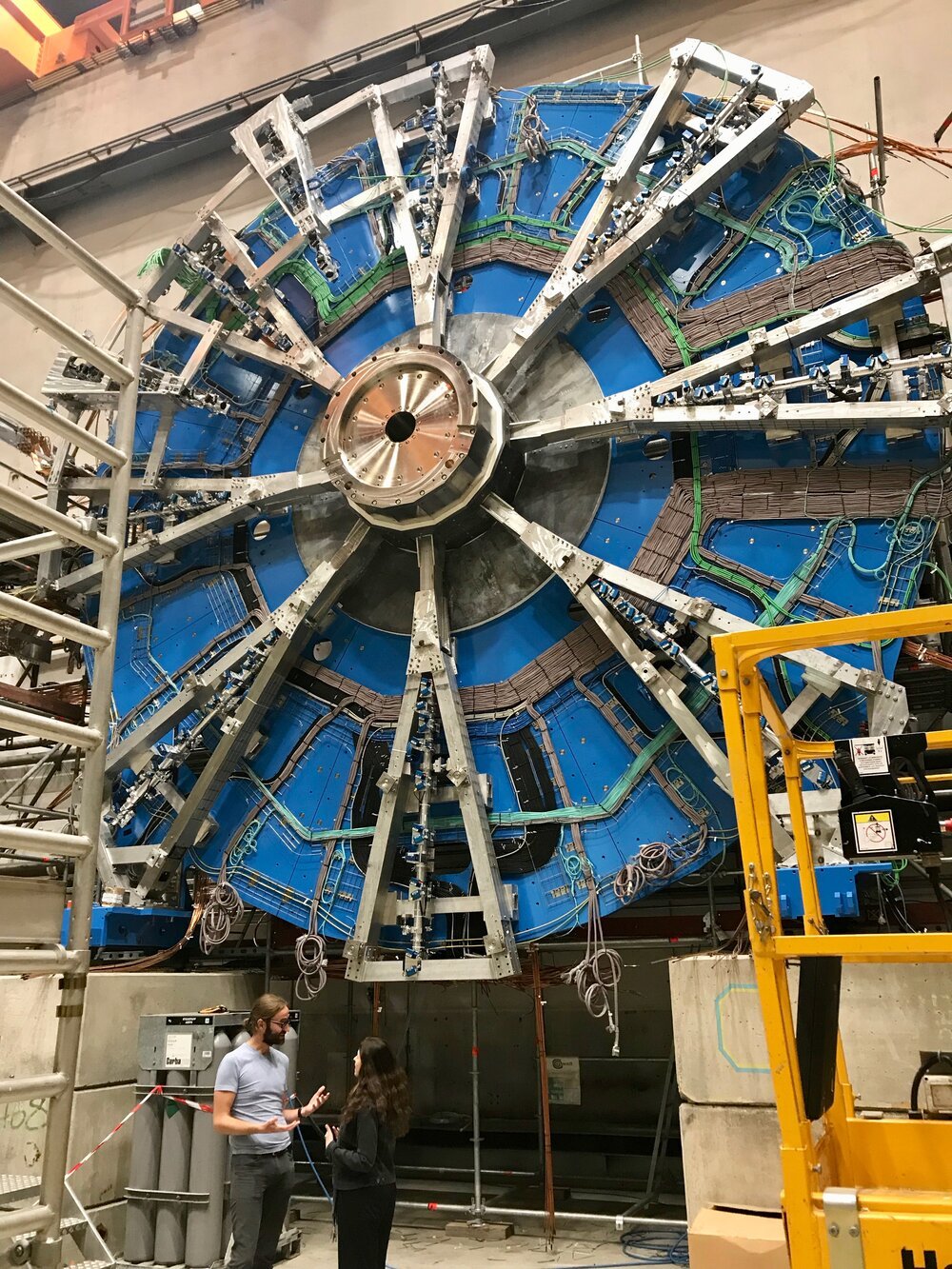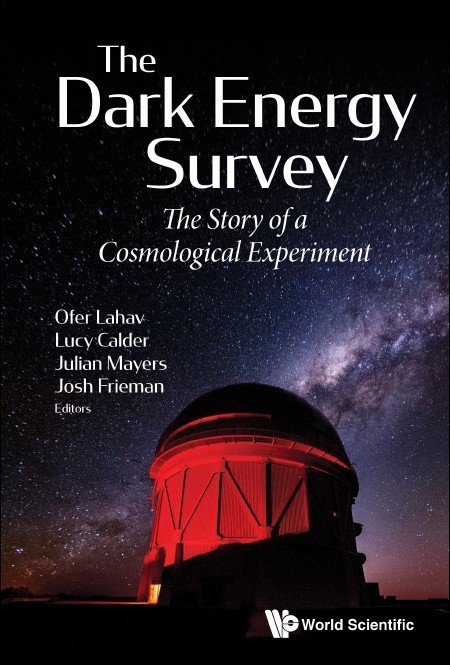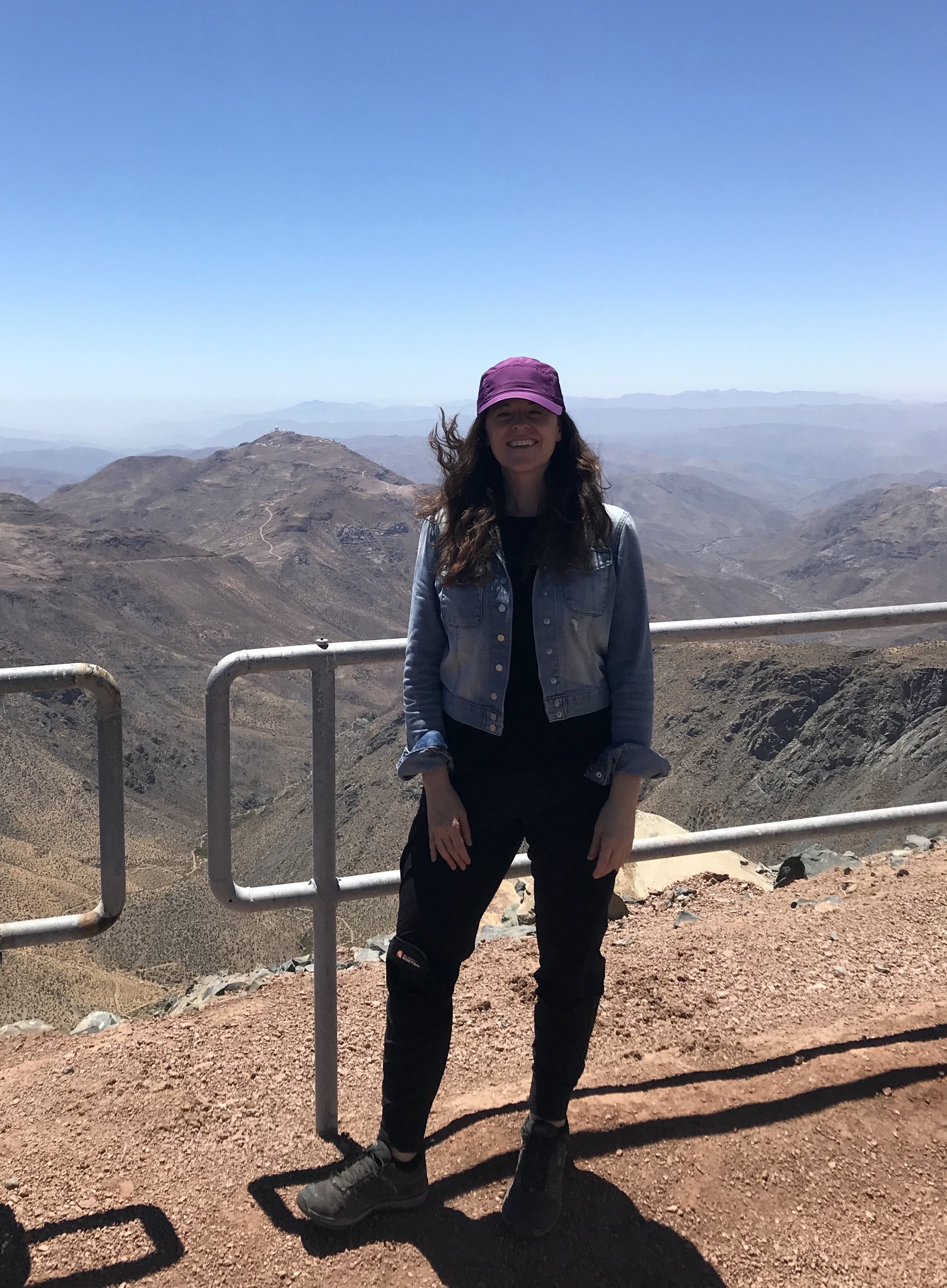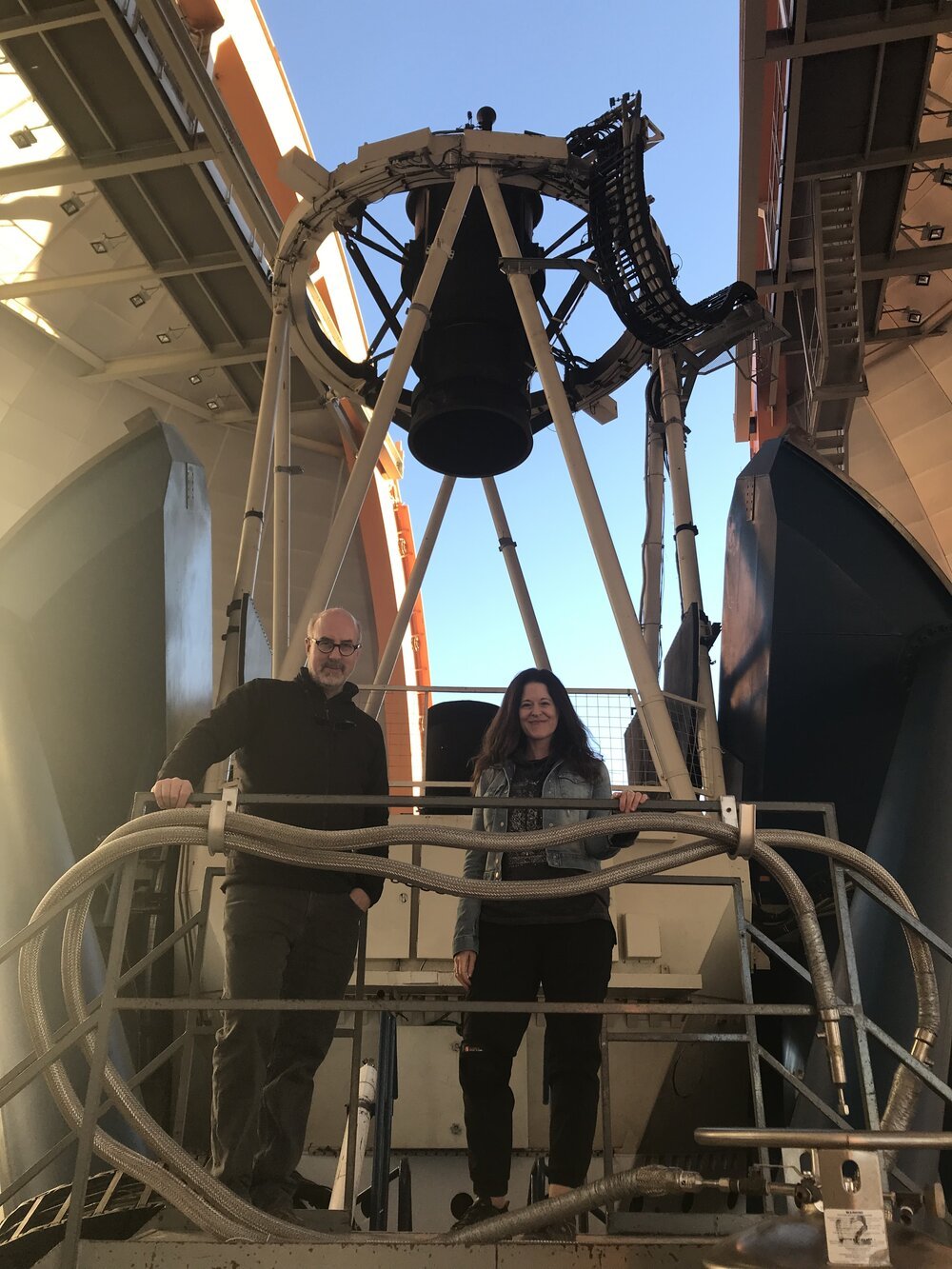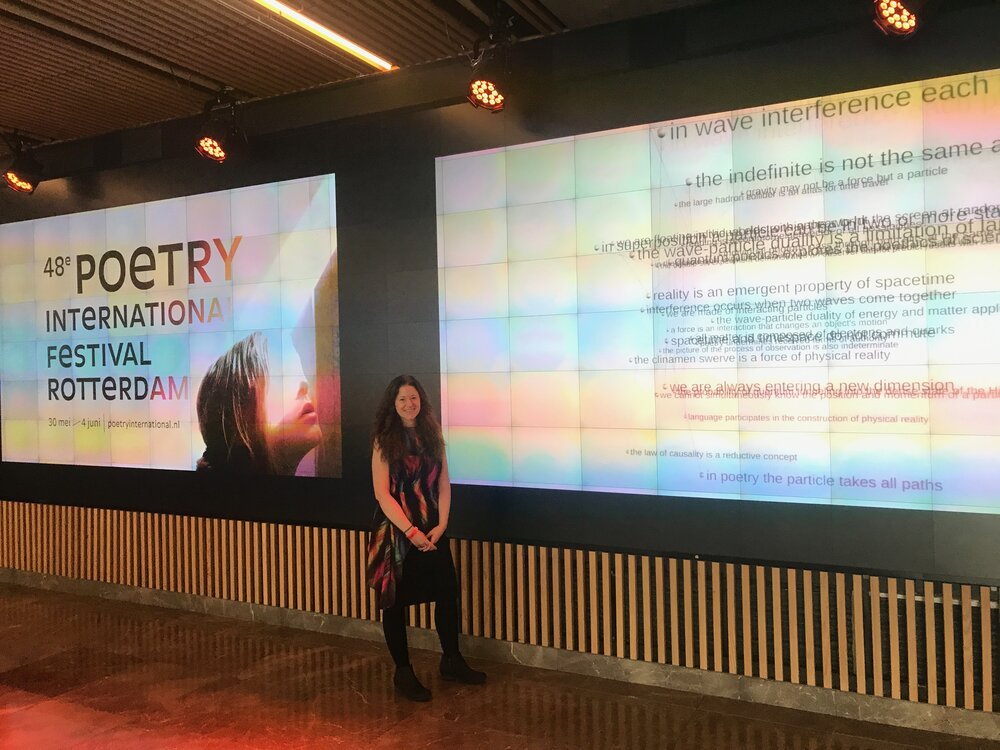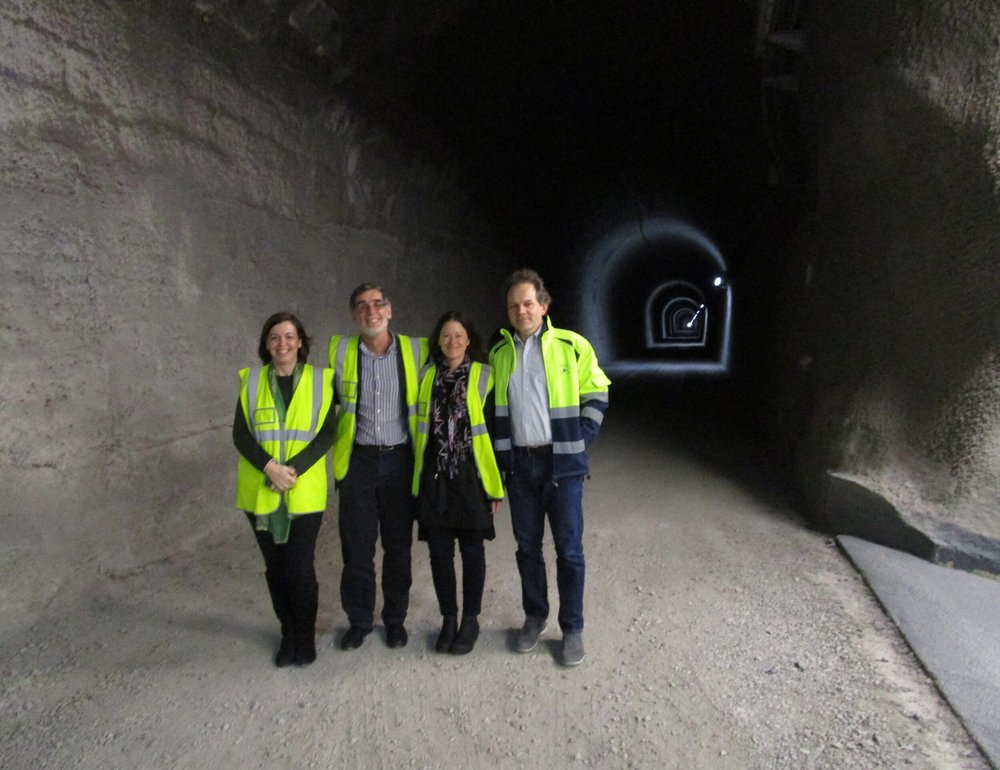Biography
Recipient of the PEN USA Literary Award in Poetry and the Noemi Press Book Award in Fiction, Amy Catanzano publishes poetry and fiction, poetic theory, and multimodal literary art. Often writing in parallel to cutting-edge physics, she forges innovative connections between literature, science, and the arts.
Drawing from invited residencies and visits to scientific research centers such as CERN, and as the lead co-founder of The Entanglements Network—an international collective of transdisciplinary writers, scientists, artists, and scholars—Catanzano collaborates with scientists in addition to her independent projects. A Professor of English and the Poet-in-Residence at Wake Forest University in North Carolina, she has a Master of Fine Arts degree from the Iowa Writers’ Workshop.
More about Amy Catanzano
Catanzano’s latest book, The Imaginary Present: Essays in Quantum Poetics, on poetry and science, is published by the University of Michigan Press in the Poets on Poetry Series. She received the PEN USA Literary Award in Poetry for her second poetry collection, Multiversal, published by Fordham University Press as the recipient of the Poets Out Loud Prize, selected by poet Michael Palmer. Starlight in Two Million: A Neo-Scientific Novella, combining fiction with poetry, was published as the recipient of the Noemi Press Book Award in Fiction. A book collaboration with artist Eric William Carroll, A Light Year of Lead, features a suite of her poems in response to Carroll’s studio art and photographs of scientific experiments. Her first book of poetry, iEpiphany, was published by the independent press of poet Anne Waldman.
Catanzano’s literary projects involving science focus on particle physics, astrophysics, and quantum computing. Catanzano’s World Lines: A Quantum Supercomputer Poem, which uses a theoretical model of a topological quantum computer as a new poetic form, was published by the Simons Center for Geometry and Physics at Stony Brook University. World Lines has been featured in the American Physical Society’s APS Physics, Stanford University and Fermilab’s Symmetry Magazine: Dimensions of Particle Physics, and elsewhere. World Lines was presented in the 2025 Quantum India Summit as part of the Quantum Initiative at the Indian Institute of Science and the Department of Science and Technology, sponsored by the Government of Karnataka. Her moving digital poem, Wavicles, on wave-particle duality, was exhibited at the Rotterdam International Poetry Festival and the Oslo Festival of Visual and Digital Poetry in the group show, The Gravity of Words, curated by the software developers of 3D Poetry Editor.
Her work in poetic theory appears internationally in the journals Crisis and Critique and CounterText: A Journal for the Study of the Post-Literary, as well as in U.S. venues such as Poems and Poetics and Jacket2, the University of Pennsylvania’s online journal of poetry and poetics. At the invitation of APS Physics, Catanzano contributed a poem, “Higgs Boson: The Cosmic Glyph,” for a portfolio of responses to the 10th anniversary of the particle’s discovery at CERN. They later featured her op-ed, “Poetry and Physics in Radical Collaboration.” The subject of critical study by scholars, Catanzano’s work has been taught in literature, writing, and physics courses in the U.S., U.K., Europe, Australia, and elsewhere.
Catanzano’s creative work is published widely in journals such as Conjunctions and New American Writing. Anthologies and book collections featuring her poetry include World Scientific’s The Dark Energy Survey: The Story of a Cosmological Experiment and #Nodes: Entangling Science and Humanities, with editions in Spanish and English. The Imaginary Present: Essays in Quantum Poetics is currently being translated for an edition in Arabic.
Work with Scientists
Funded by grants from Wake Forest as well as sponsoring institutions, Catanzano’s residencies at scientific research centers often involve speaking with scientists, touring experiments, and giving talks and poetry readings. In addition to her work at CERN with the U.S. ATLAS Experiment at the Large Hadron Collider, she has served as the Poet-in-Residence at the Simons Center for Geometry and Physics at Stony Brook University in New York, Canfranc Underground Laboratory in the Spanish Pyrenees, and Cerro Tololo Inter-American Observatory in north-central Chile. Additional visits have included the Green Bank Telescope in West Virginia and the Donostia International Physics Center in San Sebastián, Spain. She is currently involved in transdisciplinary physics-poetry projects with scientific collaborators based in Switzerland/Berlin, the U.K., and California.
At Wake Forest, Catanzano serves as the co-director of the Dillon Johnston Writers Reading Series. Prior to Wake Forest, she taught in the Jack Kerouac School of Disembodied Poetics, co-founded by poets Allen Ginsberg, Anne Waldman, and Diane di Prima at Naropa University in Boulder, Colorado.
See here for Amy Catanzano’s biography at the Poetry Foundation.
Reviews and Praise
“Amy Catanzano brings the seemingly disparate worlds of poetry and quantum physics together in a uniquely creative way by fully embracing and exploring the core principles of both realms. She challenges the ways we think about and implement each one, providing a deeper appreciation for both and for how connected they are.”
—MARK KRUSE, DEPARTMENT OF PHYSICS, DUKE UNIVERSITY
“Blasting through the barrier of metaphor, Amy Catanzano’s The Imaginary Present brings us, at vertiginous speed of light, into the multiverse of dimensionalities, where poetry in superposition exposes cosmos to the questions of quantum poetics, exploring daringly the physics of the impossible, and speculating inventively on the yet conceptless concepts . . .”
—MING-QIAN MA, SUNY-BUFFALO
“No lasting poetry from any era has ever flourished without an underlying cosmovision. No scientific revolution has existed without its poetic complement. For poets of antiquity like Lucretius, the harmonization of mundus with cosmos was de rigueur. Later, poets in the era of Aristotelian physics, and later yet, poets in the wake of the Newtonian revolution, struggled with the justification of poetics by science, and vice versa. And until very recently, the Quantum and Multiverse revolutions have been in danger of not finding our epoch’s Great Interlocutor. Amy Catanzano’s The Imaginary Present is a TITANIC endeavor that merits immediate and wideattention not just by scientists and poets, but by anyone who is striving to become a contemporary. These spellbinding essays have flung me into a state of utter ecstasy.”
—RODRIGO TOSCANO
“Many find it hard to conjure the words needed to accurately describe the quirky world of quantum objects and its logic-defying rules. But researchers and artists alike keep trying to do exactly that. One such artist, poet Amy Catanzano, thinks that poetry could provide a tool for developing a more effective language for communicating the complex ideas of quantum physics. This year she put her idea into practice through a poem [World Lines] about a topological quantum computer consisting of four quantum bits . . . . this poem provides a pathway for those outside of physics to acquaint themselves with some tricky quantum concepts.”
—APS PHYSICS
“Amy Catanzano offers us a poetic vision of multiple orders and multiple forms, of a fluid time set loose from linearity and an open space that is motile and multidimensional. [Multiversal] exists at once in a future-past and in a variety of temporal modes. At one moment the scale is intimate, at another infinite. She interrogates our means of observation and measurement (the telescope, the ice-core), our mappings, our cosmic calculations, our assumptions about cause and effect. In the background, there is “a war being fought,” though which of many wars, cultural, scientific, military, we are not told….As much as the frame may be cosmic (micro- or macro-), it is important to remember that the work serves the vital questions of the here-and-now, ‘the flowering of the world,’ the corrosiveness of violence, the primacy of desire, the necessity of wonder….”
—MICHAEL PALMER
“Amy Catanzano’s Multiversal presses the desire to measure against the refusal to map, simultaneously conflating and calibrating an unfolded and flowering multidimensional present. Catanzano maneuvers through embrasures and enclosures, conceptual strata and human dream, in an effort to ‘narrate the code’ of this opened space ‘Since only by way of counterpoint can [she] build an invention to measure the behavior of everything clockwise.’ Narration, however, may be an oversimplification. The language sings and branches, blooming sonic roses and luminous thought. This is not science, since the results cannot be replicated. Instead, Multiversal is philosophy at its highest order, poetic vision in the service of a greater accuracy, a ‘quiet machine’ with incredible force.”
—PEN CENTER USA AWARD CITATION
“Starlight in Two Million is a neo-hippie, alternative-future creation myth in which space-time limitations disappear and characters forge ever-developing notions of freedom, responsibility, and relationship, in settings of nowhere and everywhere. Catanzano comes across as a superstring theoretical linguist sensualist geek collagist, with instincts to parse, to layer, and to linger, in dynamic context or in contextual dynamism. A poetic attempt at the elusive Theory of Everything? Her work feels important, and full of wonder for what is and what could be. Scientists and artists share this.”
—RAIN TAXI REVIEW OF BOOKS
“…Catanzano’s poetics exists side by side with her poems in which the intersection between poetry & science plays itself out in a contemporary, even futuristic form….For a further take on the poetry-science connection as it first came into a radical poetics, [see] Goethe, Shelley, & others—a dissolution of boundaries that continues into the present….”
—POEMS AND POETICS
“Amy Catanzano's Multiversal is a complex shimmering meteroric / meteoric phenomenon, tended and tucked with seismic tremor, quantum folds, solar wingbeats, traversing all manner of particulars from blooming lotuses to Mandelbrot sunrises, from deep space to all-ocean worlds and quirky thorn-opals. What mischievous orbits, what jewelled delight: 'everything's a little brighter beyond the parameters.' The mind/poetry of this book is wondrous, strange, a polyvalent stimulant. I didn't think poetry could ever again be so beautiful. 'Between the eye and its rock star fractal / Straight into the future!'"
—ANNE WALDMAN
“Amy Catanzano's [Starlight in Two Million] is a metafictional tour de force: a tour of the forces that compose the cosmos, a recomposition of the music of the spheres. Here, narrative flow becomes a kind of quantum fluid, bifurcating into character systems and poetry. Tinctures of the inhuman spread through this writing, causing language to convulse in forms as vivid and varied as the multiverse itself. Alternately explosive and meditative, at once lyrical and conceptual, Catanzano’s work renews the pataphysical claim of literature on science. In this work, American literature has found its own [Alfred] Jarry.”
—ANDREW JORON
“Amy Catanzano’s writing is a vector, releasing sparks. To read her work is to emit/receive—something. From a distant yet intimate point. What will happen next? Where will you go? [Starlight in Two Million] is a guidebook to a future that has not arrived yet. To ‘predicate.’ To ‘devolve.’ To ‘shimmer.’ In a book that is a like a nerve.”
—BHANU KAPIL
“[Starlight in Two Million] is a scientific experiment. It moves language in new directions…[and]…challenges the boundaries and rules of language and literature through experimentation on all levels: perspective, time, form, literary genre, and scientific genre.”
—JACE BRITTAIN & RACHEL ZAVECZ
“It is a truism that lyric poetry captures time, but like most truisms, and as the poems in Amy Catanzano’s wondrous and wondering iEpiphany demonstrate, this formulation isn’t quite right. For one thing, poetry captures nothing; the book might easily have been titled Pleiades, after the constellation one can see only as an elusiveness and by not looking at it directly. And too, for Catanzano, the temporality of the lyric takes a turn; the poems in this book have become lyrics of temporality. The iEpiphanies that follow are nothing less than glimpses of light moving through time: light and time, intertwined.”
—LYN HEJINIAN
“iEpiphany proposes a futuristic lyric that implodes upon impact. These poems are infinitely complex and yet completely clear–and they know what they want. The will here is to bring the reader into another dimension to witness the elsewhere that is ‘part fantasy part contingency.’ The prosodic contrivances that take the reader on this delightful ride are imaginative, elegant and effective. iEpiphany is divine!
—LAURA MORIARTY
“[Catanzano’s] verse inhabits an uncertain place. It disorients, disquiets and amuses by turns. iEpiphany does not give us a pat equation to help us discover where we are and how quickly we’ll get there—it’s too sophisticated not to enjoy the ambiguities it stirs up and too whimsical to waste too much time with ponderous condescension—it encourages us to take pleasure in the journey itself.”
—FREE VERSE MAGAZINE
